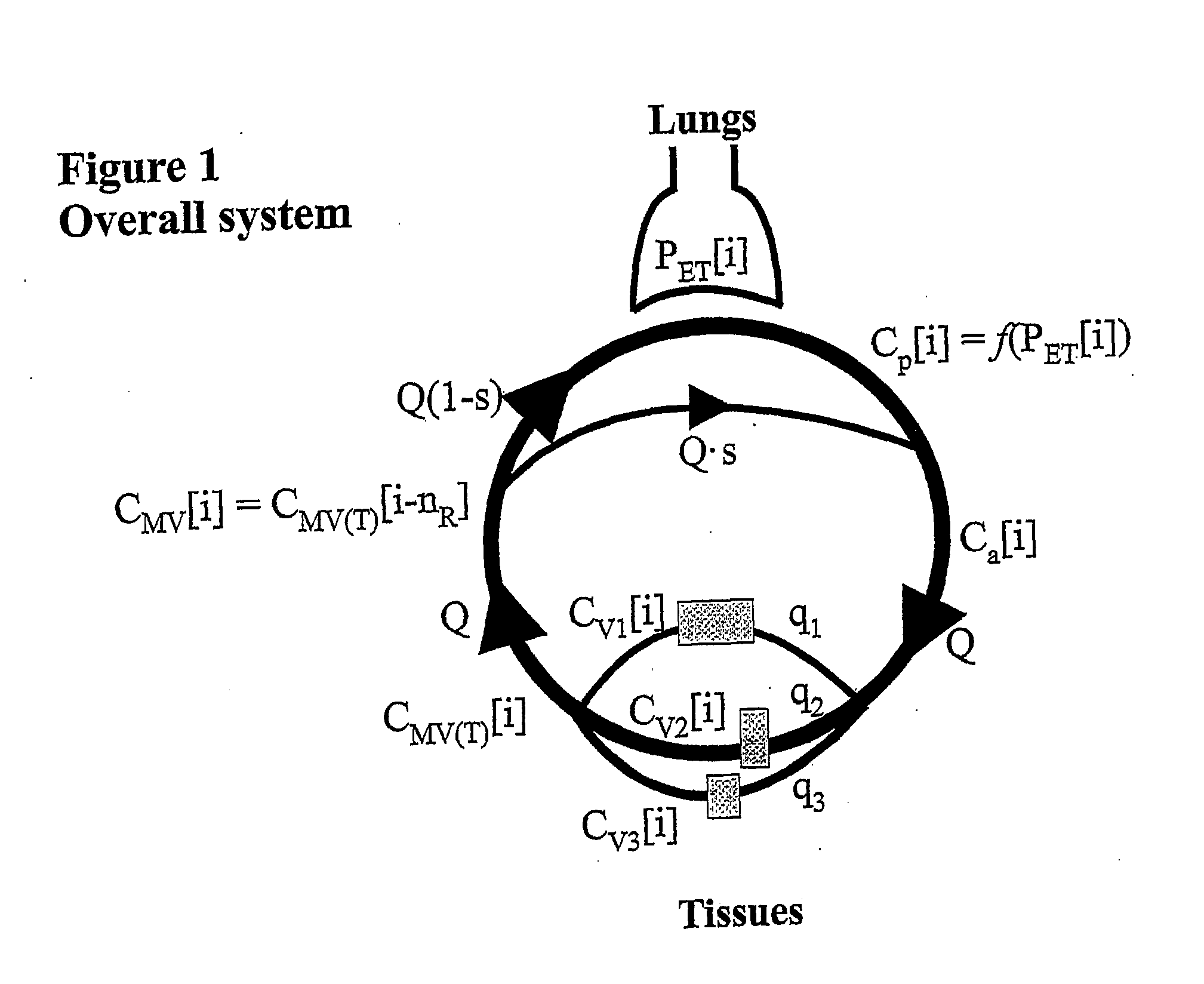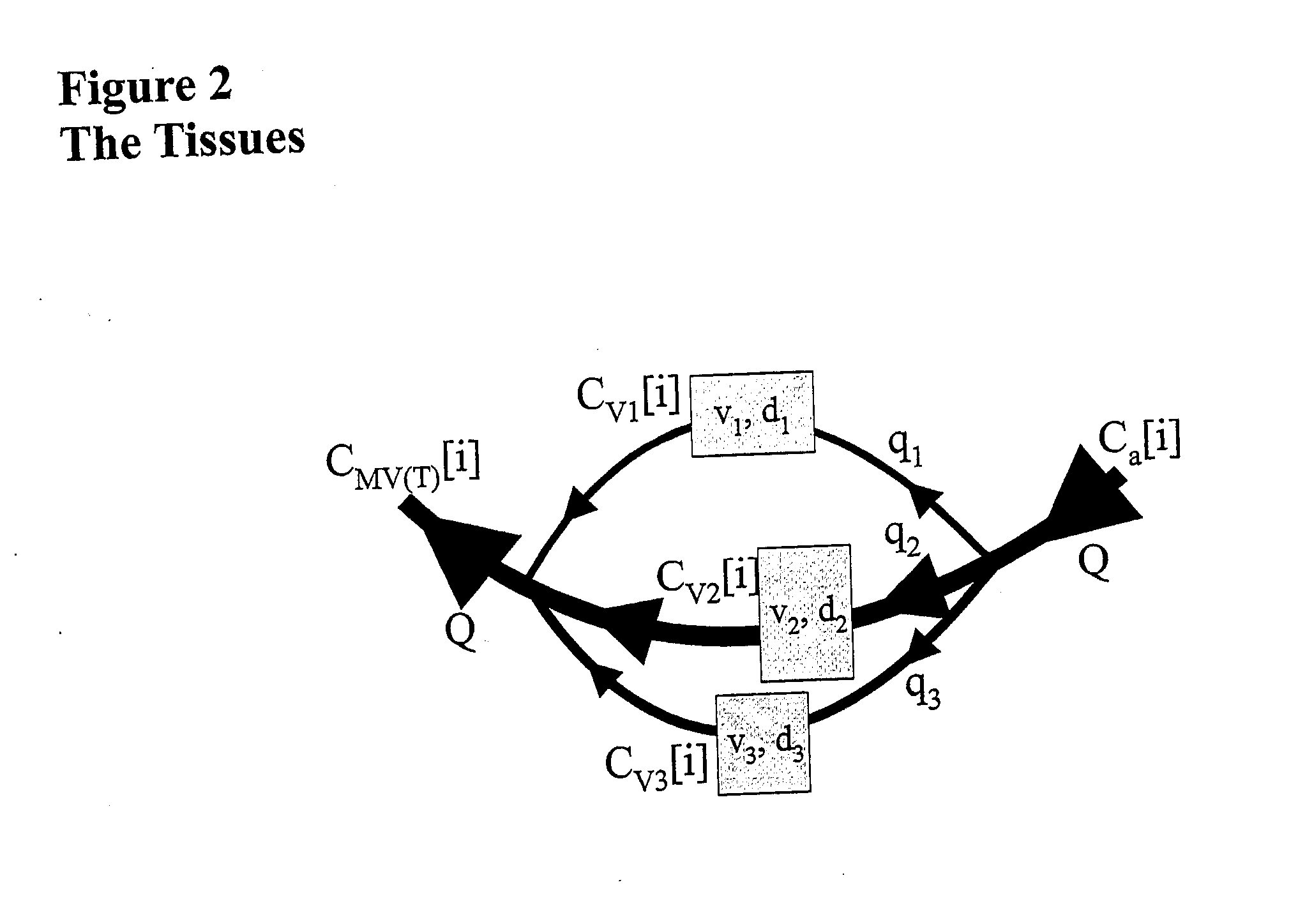Apparatus to attain and maintain target end tidal partial pressure of a gas
a technology of end-tidal partial pressure and apparatus, which is applied in the direction of valve operation means/release devices, applications, diagnostic recording/measuring, etc., can solve the problems of inability to rapidly and accurately achieve targeted arterial carbon dioxide partial pressures, variable and general unpredictable ventilatory response to perturbations in end-tidal partial pressures of gases. to achieve the effect of accurate implementation of end-tidal targets
- Summary
- Abstract
- Description
- Claims
- Application Information
AI Technical Summary
Benefits of technology
Problems solved by technology
Method used
Image
Examples
example 1
[0363]An apparatus according to the invention was used to target end tidal gas concentrations of CO2 and O2 in 35 subjects. We targeted the following sequence (values attained in brackets): normocapnia (60 seconds a PetCO2=40 mm Hg, SD=1 mm; PetO2=100 mm Hg, SD=2 mm), Hypercapnia (60 seconds at PetCO2=50 mm Hg, SD=1 mm; PetO2=100 mm Hg, SD=2 mm), normocapnia (100 seconds), hypercapnia (180 seconds), and normocapnia (110 seconds). FIG. 8, comprises a partial raw data set for 6 subjects.
PUM
 Login to View More
Login to View More Abstract
Description
Claims
Application Information
 Login to View More
Login to View More - R&D
- Intellectual Property
- Life Sciences
- Materials
- Tech Scout
- Unparalleled Data Quality
- Higher Quality Content
- 60% Fewer Hallucinations
Browse by: Latest US Patents, China's latest patents, Technical Efficacy Thesaurus, Application Domain, Technology Topic, Popular Technical Reports.
© 2025 PatSnap. All rights reserved.Legal|Privacy policy|Modern Slavery Act Transparency Statement|Sitemap|About US| Contact US: help@patsnap.com



